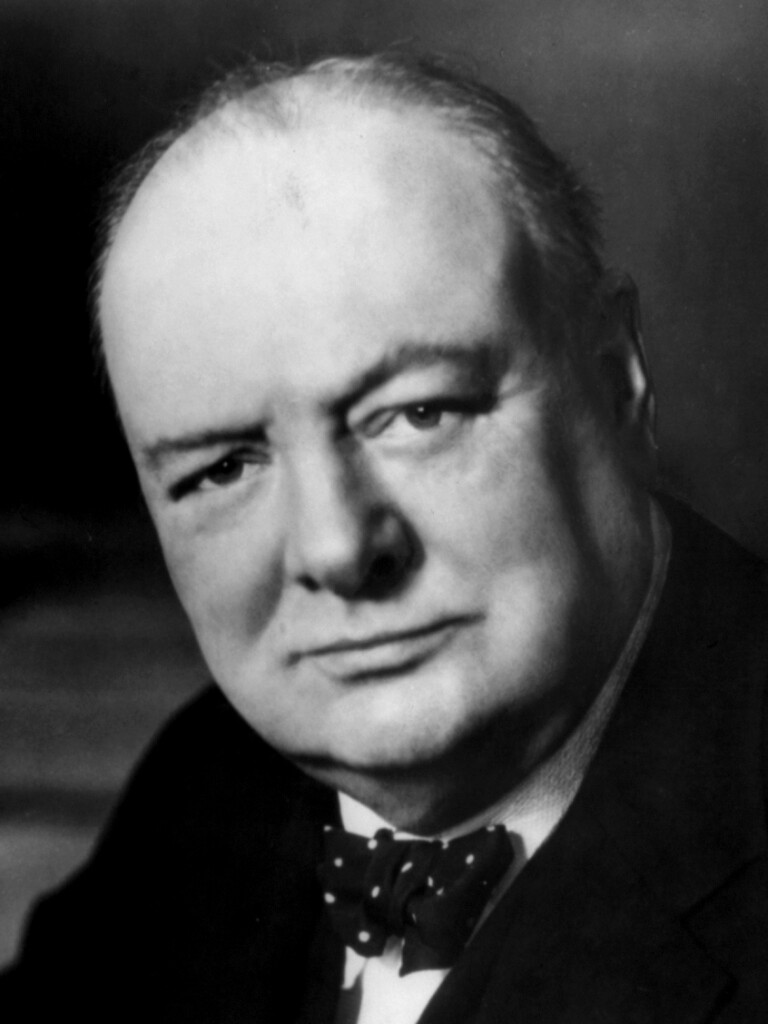America’s Pacific battle fleet still smoldered at Pearl Harbor, several battleships sunk in the mud, when Franklin Roosevelt received a cable from British Prime Minister Winston Churchill on December 9, 1941. Churchill suggested he travel to meet with the American President as soon as possible. Roosevelt at first demurred, citing the dangers presented by German U-boats. Churchill insisted, driven by concerns that an America desirous of vengeance would concentrate on the Pacific, rather than the war in Europe. Even after Hitler declared war on the United States on December 11, followed shortly by Italy, Churchill wanted to ensure the American war effort would focus on Germany first. He got his way, boarding the new British battleship HMS Duke of York in secret, and steaming for America escorted by three destroyers. The trip was kept secret from the British public.
Prime Minister Winston Churchill aboard HMS Duke of York in December 1941. Royal NavyHis absence from London did not go unnoticed, and German propaganda broadcasts speculated over his whereabouts. On December 22, Duke of York entered port at Norfolk, Virginia. From there the US Navy flew the Prime Minister to Washington’s National Airport, where Roosevelt’s limousine met his visitor, whisking him to the White House. Not until the Prime Minister was inside the Executive Mansion was his presence in Washington announced. Churchill’s large retinue of aides, clerks, secretaries, and deputies arranged for other housing, in the British embassy, with friends, or whatever they could find. Washington’s hotels were already overcrowded. For the next several days, stretching into weeks, the United States and representatives of more than two dozen nations hammered out the Allies’ war strategy for the two main theaters of conflict, the Pacific and Europe. Churchill and Roosevelt were at the forefront of it all.

ADVERTISEMENT - CONTINUE READING BELOW
1. Churchill took over several rooms of the White House
Churchill’s voyage across the North Atlantic in December was arduous for the Prime Minister. Strong winds, heavy seas, and continuous sleet and freezing rain made the voyage anything but a pleasure cruise. At the time the Prime Minister was 67 years old, not in the best of health. But he arrived in America eager to get to work, though at the pace he had long practiced. Churchill like to read his newspapers, as well as work correspondence, as he lay in bed all morning, after a bracer of whiskey or brandy with his breakfast. He usually rose just before lunch, after which he returned to bed for a nap. His real workday began in the late afternoon and carried on to the wee hours of the morning. Throughout his day he fueled himself with champagne at lunch and dinner, and brandy or whiskey in between.
Churchill followed this schedule aboard Duke of York, where an accommodating wardroom saw to his needs. The Royal Navy monitored German radio broadcasts and kept him apprised over German speculation regarding his whereabouts, which included Washington, Moscow, and the Middle East. He arrived at Norfolk to learn the Germans were increasingly certain he was in America. After being greeted by the President, the British and the world were informed the “Winnie”, as the British press loved to call him, was at the White House. There, Churchill had no intention of altering his work or personal habits, imposing a new burden on the White House staff, one to which they had never been accustomed. Churchill took over the Blue Room for his personal use, and the Monroe Room, where Eleanor Roosevelt had held press conferences, to serve as his personal map room.

